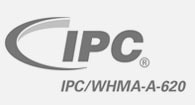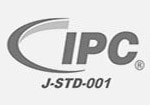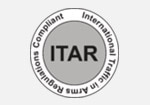Wire insulation is a crucial outer layer applied to wires and cables to protect the wires from external conditions. The insulation or jacket simultaneously prevents current from leaking from the wires into the surrounding area. To meet the needs of a diverse range of wire materials, settings, and applications, wire insulation is available in a variety of types and materials.
Materials Commonly Used for Wire Insulation
Depending on the application, wire insulation can be composed of many different materials, including plastic, rubber, and fluoropolymers.
Plastic
Plastics exhibit a number of useful characteristics ideal for wire insulation, including ductility, electrical resistance, UV resistance, and fire resistance. Below are popular plastics used in electrical wire insulation:
- Polyvinyl Chloride (PVC): PVC is one of the most commonly used insulation materials due to its cost effectiveness and high durability. It exhibits high resistance to fire and chemicals, and can maintain its shape and durability in temperatures from -55° C up to 105° C.
- Semi-Rigid PVC (SR-PVC): SR-PVC can withstand abrasion and has a high level of resistance to acids, alkalis, water, and heat.
- Plenum Polyvinyl Chloride (Plenum PVC): Plenum PVC is engineered with greater fire resistance for fire-rated use in plenum spaces.
- Polyethylene (PE): PE is denser and harder than PVC. It is highly electrically insulative and especially resistant to cracking at temperatures between -65° C and 80° C.
- Polypropylene (PP): Polypropylene has higher temperature resistance than PE, with operating temperatures between 30° C to 80° C.
- Polyurethane (PUR): PUR is flexible, with high water, chemical, and abrasion resistance. It provides excellent performance in marine applications and low temperatures from -62° C to 93° C.
- Chlorinated Polyethylene (CPE): CPE is a cost-effective insulation with excellent resistance to oil, heat, and outdoor conditions.
- Nylon: Typically used as a secondary insulator over softer insulation materials. Nylon provides a flexible protective layer with poor water resistance.
Rubber
Rubber materials are more flexible than plastic, especially at lower temperatures. Rubber materials used for wire insulation include:
- Thermoplastic Rubber (TPR): TPR is resistant to a broad range of temperatures, UV radiation, and wear.
- Neoprene (Polychloroprene): Neoprene exhibits superior abrasion and cut resistance, as well as resistance to oils and solvents.
- Styrene Butadiene Rubber (SBR): SBR has greater temperature resistance than neoprene, and is typically used for MIL cables at temperatures from -55° C to 85° C.
- Silicone: Valued for its high flexibility, silicone has exceptional flame retardance and heat resistance up to 180° C.
- Fiberglass: Fiberglass is used for extremely high temperature applications up to 482° C. It is also resistant to chemicals and water.
- Ethylene Propylene Rubber (EPR): EPR is very resistant to heat, oxidation, water acids, alkalis, alcohol, and electrical currents.
- Chlorosulfonated Polyethylene (CSPE): Perfect for low-voltage applications, CSPE has good chemical and UV resistance, and operates at a broad range of temperatures.
- Ethylene Propylene Diene Monomer (EPDM): EPDM has low conductivity, is extremely flexible, and performs at temperatures between -45° C and 177° C.
Fluoropolymer
Fluoropolymers are polymers that are especially resistant to bases, acids, and solvents. Popular fluoropolymers used in electrical insulation include:
- Perfluoroalkoxy (PFA): PFA is an excellent option for enhanced electrical efficiency due to its low dissipation factor. It can withstand temperatures from -65° C to 250° C, but is pricier than other insulation options.
- Polytetrafluoroethylene (PTFE): PTFE offers exceptional resistance to oil, chemicals, heat, and moisture. It is highly flexible in a broad range of temperatures, from -73° C to 204° C.
- Fluorinated Ethylene Propylene (FEP): FEP has excellent electrical insulation properties, as well as UV and chemical resistance. It is extremely tough and flexible.
- Ethylene tetrafluoroethylene (ETFE): ETFE exhibits excellent corrosion resistance, a high melting temperature, and superior resistance to chemicals, electrical current, and high-energy radiation.
- Halar® ethylene chlorotrifluoroethylene (ECTFE): A melt-processable polymer that exhibits superior strength, chemical resistance, and flexibility, ECTFE can also be extruded and braided for extra abrasion protection.
- Polyvinylidene Fluoride (PVDF): PVDF is an economical insulation that is lightweight, flexible, and flame resistant to UL 910 standards for plenum cables.
Wire Insulation Applications
The type of material used for wire insulation is largely determined by the application for which it is used.
Plastic wire insulation is used for:
- Medical applications
- Food & beverage industry
- Military purposes
- Industrial power plants
- Interior spaces either beneath raised floors or above dropped ceilings
- Marine and low-temperature environments
- Power & control cable applications
- CPE cable insulation displays
Rubber wire insulation is used for:
- Heat treating
- Glass and ceramic kilns
- Foundries
- Aluminum processing
Fluoropolymer wire insulation is used for:
- Military applications
- Automotive industry
- Household appliances
Premium Wire Insulation From Electro-Prep, Inc.
At Electro-Prep, we have the knowledge, equipment, and skills necessary to produce quality wire and cable insulation from a variety of materials for virtually any application. Contact us today to learn more about our selection of insulation materials or request a quote.
Wire insulation is essential for preventing electrical shorts between conductors. There are several types of wire insulations to choose from, and each material has different characteristics and advantages. This blog post will discuss the differences between PVC and Teflon wire insulation, as well as some of the most common applications of each type.
PVC Wire
PVC, or polyvinyl chloride, is a highly durable and versatile thermoplastic material that has several beneficial characteristics for wire insulation applications. For example, in addition to being moisture, flame, and abrasion-resistant, PVC functions optimally in temperatures ranging from -55 °C to 105 °C. It is also resistant to UV and many types of chemicals, including acids, oils, and alkalis.
PVC offers a less expensive material option for wire insulation. This makes it a popular choice for applications involving a large volume of wire or where cost is a significant consideration. It is the most readily available wire insulation material choice and provides a long service life, typically exceeding 25 to 30 years. PVC is also easy to process and recycle.
Teflon Insulated Wire
Teflon® is a registered trademark name for the material polytetrafluoroethylene (PTFE). This synthetic fluoropolymer is one of the most popular insulating compounds. PTFE can withstand extreme temperature fluctuations between -90 °C to 260 °C and is used in many challenging environments. It is also highly durable and exhibits excellent electrical properties.
In comparison to wires insulated through extrusion, PTFE insulated wire is tape-wrapped and therefore features a uniform thickness. For this reason, PTFE tends to be a higher-grade wire and is typically significantly more expensive than PVC insulated wire.
PVC vs Teflon Insulated Wire Applications
PVC and Teflon have many similar properties. Both materials are durable, flexible, and resistant to chemicals and UV light. However, their key differences cause them to be used in different applications. For example, while PVC can be used as both an insulation and jacketing material, Teflon is typically only used as insulation.
Applications for PVC wire insulation and cable jacketing include:
- Appliance wiring industry
- Communications industry
- Medical industry
- OEM applications
- Oil and gas industry
Teflon insulation wire offers a reliable insulation solution for applications such as:
- Aerospace industry
- Coaxial communications
- Military and defense industry
- OEM appliance wiring
- Oil and gas industry
Electro-Prep Meets All Your Wire and Cable Needs
Choosing the best type of wire insulation is an important way to ensure your assembly functions optimally and delivers a long service life. PVC and Teflon are two popular materials for wire insulation applications, and choosing which one to use depends on factors such as the environment your assembly will be used in, your budget, and more.
Electro-Prep has over 40 years of experience delivering reliable wire harnesses and cable assemblies. We can help you select the best insulation material and achieve an assembly that meets even the most rigorous demands. To learn more about our services, contact us today. When you’re ready to get started on your customized solution, request a quote.
Coaxial cables are a type of transmission cable used to transmit radio frequency (RF) signals. They generally consist of four layers—the inner conductor layer, the inner conductor insulating layer, the conductive shield layer, and the insulating outer jacket layer. This shielded design enables signal carrying voltage to flow through the central conductor with minimal interference from outside electrical and/or magnetic fields.
There are many types of coaxial cables available—varying in design and size—to suit different applications. One of the key design elements by which coaxial cables can be categorized is connector type—i.e., the mechanism that connects the cable to other devices. Below, we highlight the advantages and disadvantages of several common types of coaxial cable, based on connector, as well as their typical applications.
BNC
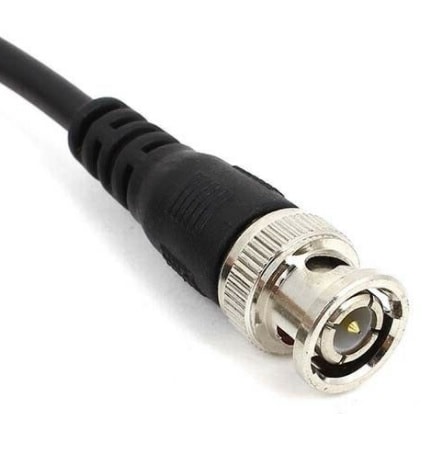 Bayonet Neill-Concelman (BNC) coaxial cable connectors are one of the most commonly used connector types. They feature a twist and snap bayonet connection design that requires a quarter-turn to form a connection.
Bayonet Neill-Concelman (BNC) coaxial cable connectors are one of the most commonly used connector types. They feature a twist and snap bayonet connection design that requires a quarter-turn to form a connection.
Key advantages of BNC connectors include:
- Simple design. They have the simplest design of all coax cable connectors.
- Easy connection. They do not require any tools.
- Small accidental disconnection risk. They lock the connection in place to prevent accidental disconnection caused by vibrations or other movements.
Some of the disadvantages include:
- Limited frequency range. They have a frequency range limited to DC-4 GHz.
- High susceptibility to variations. They can experience variations in resistance and outer sleeve connection when exposed to mechanical vibrations.
Typical applications include commercial audio/video transmission systems and RF test equipment (e.g., frequency generators, network analyzers, and oscilloscopes).
TNC
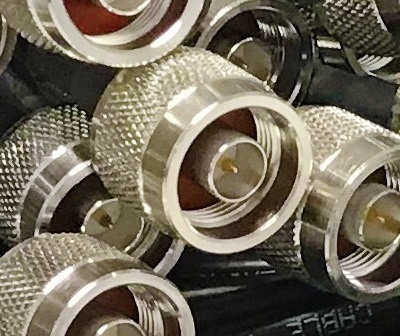 Threaded Neill-Concelman (TNC) connectors are a miniature threaded variation of BNC connectors. However, they are waterproof and more rugged.
Threaded Neill-Concelman (TNC) connectors are a miniature threaded variation of BNC connectors. However, they are waterproof and more rugged.
Key advantages of TNC connectors include:
- High frequency capacities. They can operate with frequencies up to 11 GHz.
- High mating cycle life. They can be used for up to and exceeding 500 cycles.
- Low susceptibility to variations. They are less likely to experience variations in resistance and outer sleeve connection when exposed to mechanical vibrations.
Some of the disadvantages include:
- Large size, heavy weight. They are heavier and larger than SMA connectors.
- Specific attachment requirements. They require a specific coaxial cable form.
- Potential for higher loss. Right-angled versions have a slightly higher level of loss than straight-through connectors, which can be a concern in applications involving frequencies near the operational limit of the connector.
Typical applications include mobile telephones and RF antennas.
SMA
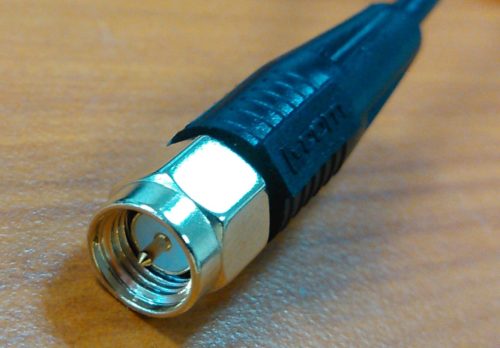 Subminiature Version A (SMA) connectors are 50 Ω connectors. They are available in several formats, including male vs. female, straight-through vs. right-angled, and more.
Subminiature Version A (SMA) connectors are 50 Ω connectors. They are available in several formats, including male vs. female, straight-through vs. right-angled, and more.
Key advantages of SMA connectors include:
- Small size, light weight. They are smaller and lighter than TNC connectors, making them suitable for applications where size and weight are a concern.
- High frequency capacities. They can operate with frequencies up to 18 GHz.
Some of the disadvantages include:
- Less robustness. They are less suitable for use in harsh environments than larger connectors.
- Unsuitable for frequent connection/disconnection. They are not designed for applications that require frequent connection and disconnection.
Typical applications include microwave systems, telecommunications equipment, and Wi-Fi antennas.
7/16 DIN
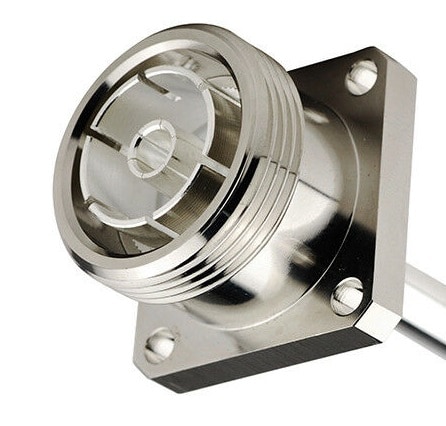 7/16 DIN (Deutsches Institut für Normung) connectors have a threaded design. They are typically used for high-wattage transmissions.
7/16 DIN (Deutsches Institut für Normung) connectors have a threaded design. They are typically used for high-wattage transmissions.
Key advantages of 7/16 DIN connectors include:
- High intermodulation rejection. They offer higher intermodulation rejection than BNC or N connectors.
- High power capacities. They handle higher power levels than most other connectors.
Some of the disadvantages include:
- Harder connection/disconnection requirements. They need a wrench for connection and disconnection.
- Incongruous with US standards. They are generally used in Europe rather than the United States.
Typical applications are base stations, broadcast communication systems, and other situations involving multiple transmissions.
QMA
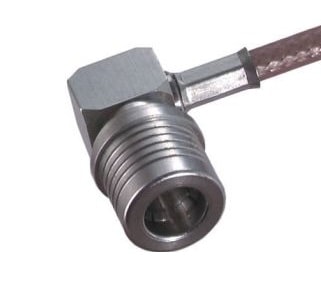 QMA connectors are similar to SMA connectors. However, they have a snap-lock design that allows for faster and easier connection/disconnection and 360° rotational capabilities after connection that allows for better installation flexibility.
QMA connectors are similar to SMA connectors. However, they have a snap-lock design that allows for faster and easier connection/disconnection and 360° rotational capabilities after connection that allows for better installation flexibility.
Other key advantages of QMA connectors include:
- High power capacities. They can handle higher power levels than some of the other connector types.
- High frequency capacities. They can operate with frequencies up to 18 GHz.
Their primary disadvantage is the lack of waterproofing. They are not suitable for use in environments where exposure to moisture is expected. However, they are ideal for use in industrial and communications applications that require the maintenance of the shielding barrier.
MCX
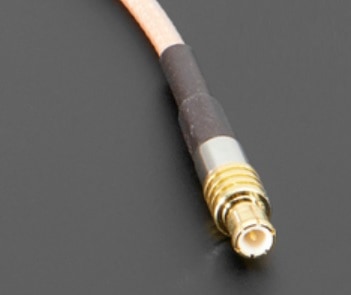 Micro coaxial (MCX) connectors are small form-factor connectors. They are designed for use in applications with size or space limitations.
Micro coaxial (MCX) connectors are small form-factor connectors. They are designed for use in applications with size or space limitations.
Key advantages of MCX connectors include:
- Similar to SMB connectors but are 30% smaller.
- Easy installation. They have a snap-on coupling design that makes installation simple and quick.
Some of the disadvantages include:
- Limited frequency range. They have a frequency range limited to DC-6 GHz.
- Variable sizes. They can vary in size depending on the manufacturer.
Typical applications include digital cellular systems, global positioning systems (GPS) devices, RF hardware, and TV tuner cards.
RCA
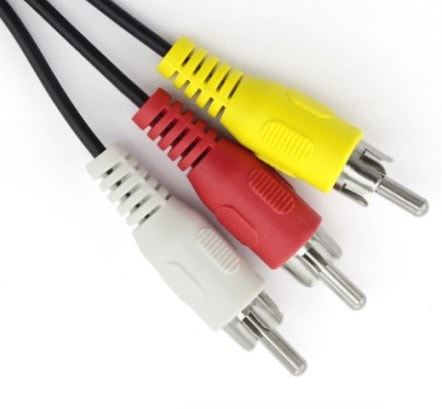 Radio Corporation of America (RCA) connectors are also known as cinch connectors. They typically feature three color-coded jacks and plugs (Red, Yellow, and White).
Radio Corporation of America (RCA) connectors are also known as cinch connectors. They typically feature three color-coded jacks and plugs (Red, Yellow, and White).
Key advantages of RCA connectors include:
- Wide availability. They are readily available.
- Low cost. They are relatively inexpensive.
The main disadvantage is the color code system. It can be difficult for some users to navigate, especially in more complex systems.
Typical applications include audio and video systems, such as camcorders, digital cameras, stereo systems, and televisions.
Partner With Electro-Prep for Your Coaxial Cable Needs!
Looking for a coaxial cable for your RF application? The experts at Electro-Prep are here to help! As a premier coaxial cable manufacturer, we are fully aware of the impact poorly designed and constructed cables can have on product performance. That’s why we employ a highly experienced and fully trained team who are committed to providing you with the highest quality cable solution. To learn more about our coaxial cable capabilities or discuss your requirements with one of our team members, contact us or request a quote today.
What is a Box Build?
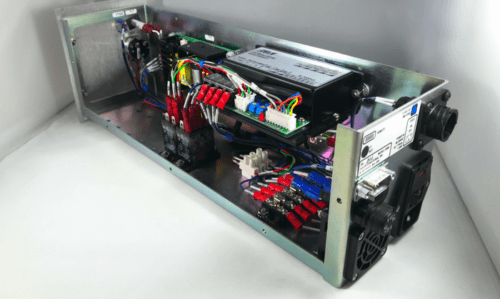 A box build is an enclosure or panel used for the integration of a system’s electro-mechanical components. A box build can be as simple as a small plastic enclosure with just one or several components or more complex, with a larger enclosure designed for full system integration of multiple electro-mechanical components and assemblies. A box build typically involves the fabrication of the panel or enclosure, the routing of cables and wires, and the installation of sub-assemblies and components. These sub-assemblies and components may include:
A box build is an enclosure or panel used for the integration of a system’s electro-mechanical components. A box build can be as simple as a small plastic enclosure with just one or several components or more complex, with a larger enclosure designed for full system integration of multiple electro-mechanical components and assemblies. A box build typically involves the fabrication of the panel or enclosure, the routing of cables and wires, and the installation of sub-assemblies and components. These sub-assemblies and components may include:
- Printed Circuit Boards
- Custom Cable Assemblies
- DIN Rails
- Power Supplies
- Programmable Logic Controllers
- Pneumatics
- Relays / Logic
- Safety Components
Box Build Design Goals
One of the most difficult challenges in manufacturing is finding the ideal balance between product design and product manufacturability. A product may have a design that makes it ideal for its intended purpose, but that design may be challenging to manufacture.
Manufacturing challenges can result in quality issues and high product assembly costs. Designing a high quality, cost-effective box build is best accomplished when a box build manufacturer is consulted and included in the design phase whenever possible.
Why Partner with Box Build Experts?
Partnering with a box build expert often saves time and money by eliminating the need to manage numerous suppliers to provide components or create and manage the production process. When you work with a box build expert, you reduce the risk of miscommunication which may occur when working with multiple vendors regarding changes or other issues. This partnership also streamlines your assembly process and reduces lead times.
Partnering with a manufacturer specializing in box build construction enables you to receive valuable input to optimize your box build design. A box build expert gives you access to integrated manufacturing processes that offer economies of scale that can prove extremely cost-effective, while maintaining the highest quality control possible.
Outsourcing your box build can be extremely cost-effective compared to manufacturing the box internally. By working with one assembly partner rather than several, you can effectively maintain higher quality control and significantly reduce costs.
Why Electro-Prep?
At Electro-Prep, box builds are one of our specialties. We have over 40 years of experience providing high-quality, value-added products to our customers. Our team of engineers and technicians have the product knowledge and expertise to help you with any design or manufacturing issue that you may encounter. As one of our core competencies, our wire harnesses and cable assemblies are built in house as well, to maintain the highest possible quality control.
Quality and service are our team’s top priorities. We are ISO 9001:2015 certified and have established a highly-skilled workforce with the discipline required to provide quality products and services. Our assembly team is certified to IPC-620A workmanship standards and J-STD-001.6 soldering standards, as well, with a certified trainer on staff. We take great pride in an outstanding, local customer service team and our products are manufactured and assembled in the USA.
Contact Electro-Prep For Your Box Build Needs
At Electro-Prep, we have a growing team of experts dedicated to providing our customers with the highest quality solutions. We provide products and services for a wide range of applications in vertical markets such as medical, electronic instrumentation, process control, military, industrial, and more. Each of our build boxes are custom designed and manufactured to meet your application’s exact specifications. To get started on your box build solutions, contact us or request a quote today.

 Bayonet Neill-Concelman (BNC) coaxial cable connectors are one of the most commonly used connector types. They feature a twist and snap bayonet connection design that requires a quarter-turn to form a connection.
Bayonet Neill-Concelman (BNC) coaxial cable connectors are one of the most commonly used connector types. They feature a twist and snap bayonet connection design that requires a quarter-turn to form a connection.  Threaded Neill-Concelman (TNC) connectors are a miniature threaded variation of BNC connectors. However, they are waterproof and more rugged.
Threaded Neill-Concelman (TNC) connectors are a miniature threaded variation of BNC connectors. However, they are waterproof and more rugged. Subminiature Version A (SMA) connectors are 50 Ω connectors. They are available in several formats, including male vs. female, straight-through vs. right-angled, and more.
Subminiature Version A (SMA) connectors are 50 Ω connectors. They are available in several formats, including male vs. female, straight-through vs. right-angled, and more.  7/16 DIN (Deutsches Institut für Normung) connectors have a threaded design. They are typically used for high-wattage transmissions.
7/16 DIN (Deutsches Institut für Normung) connectors have a threaded design. They are typically used for high-wattage transmissions. QMA connectors are similar to SMA connectors. However, they have a snap-lock design that allows for faster and easier connection/disconnection and 360° rotational capabilities after connection that allows for better installation flexibility.
QMA connectors are similar to SMA connectors. However, they have a snap-lock design that allows for faster and easier connection/disconnection and 360° rotational capabilities after connection that allows for better installation flexibility.  Micro coaxial (MCX) connectors are small form-factor connectors. They are designed for use in applications with size or space limitations.
Micro coaxial (MCX) connectors are small form-factor connectors. They are designed for use in applications with size or space limitations.  Radio Corporation of America (RCA) connectors are also known as cinch connectors. They typically feature three color-coded jacks and plugs (Red, Yellow, and White).
Radio Corporation of America (RCA) connectors are also known as cinch connectors. They typically feature three color-coded jacks and plugs (Red, Yellow, and White).  A
A 

